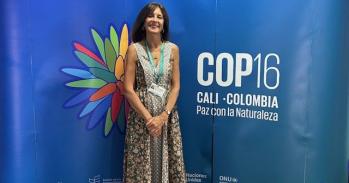
The ‘lost’ photographs of Captain Scott’s final expedition to the South Pole, purchased by the Scott Polar Research Institute with the help of the Heritage Lottery Fund, were on show at the Houses of Parliament yesterday.
The ‘lost’ photographs of Captain Scott’s final expedition to the South Pole, purchased by the Scott Polar Research Institute with the help of the Heritage Lottery Fund, were on show at the Houses of Parliament yesterday.
SPRI is a fitting home for this photographic archive and one which will ensure that the material is available to scholars and scientists for the foreseeable future.
Sir Ranulph Fiennes
Dozens of MPs and Peers were given rare, personal access to the photos after they were saved for the nation through the efforts of SPRI, with a major grant from HLF, who hosted yesterday’s reception. Matching funds also came from the UK Antarctic Heritage Trust, the Staples Trust and other private donors.
A remarkable collection, the photographs give a view of the Antarctic as seen through Captain Scott's eyes as he documented the first part of his epic journey to the South Pole. Subjects include his companions, the ponies and sledges, the scientific work they were undertaking and the breathtaking Antarctic landscape.
The photographs themselves were printed in the Antarctic by members of Scott's team as they waited for his return from the Pole, and for most of the past 70 years were considered lost.
Captain Scott was taught photography by the official expedition photographer, Herbert Ponting, and the collection charts his first attempts through to the remarkable images he captured on the first part of the Polar journey to the head of the Beardmore Glacier.
Director of SPRI, Dr Julian Dowdeswell, said: “The hundred or so photographs taken by Scott provide a hitherto unseen view into a number of facets of the expedition’s progress towards the Pole. There are a number of beautifully composed images of the expedition’s camps on the ice and the tranquility of a calm Antarctic evening.
“Research is one side of SPRI, the other, our polar library, archive and museum, are a very important part of our activities. The Institute is, in a very real way, a long-term legacy of the endeavours of Scott and his companions and a fitting home for his photographs.”
SPRI was able to secure the collection within a tight purchasing deadline thanks to changes to HLF’s urgent acquisitions criteria. HLF has changed its criteria to make sure it can respond quickly so that valuable heritage is not lost.
Thanks to a previous HLF award, the original 1,700 glass-plate negatives of Herbert Ponting's photographs were bought by SPRI in 2004. The acquisition of Scott's own photographs brings the two collections together for the first time, making this the largest photographic record of the British Antarctic Expedition 1910 – 1912. The purchase of the photographs by SPRI will allow the images to be reunited with Scott's camera, which was given to the Institute by the late Lady Philippa Scott in 2008.
The photographs will now make their final journey to the SPRI in Cambridge where, after a period of cataloguing and conservation, they will go on public display, as well as being made available online.
Antarctic explorer, Sir Ranulph Fiennes, said: “It is a delight to learn that the Scott Polar Research Institute has been able to secure Scott’s own photographs of the Terra Nova expedition, with the help of the Heritage Lottery Fund and the generosity of those donors who have provided match-funding. SPRI is a fitting home for this photographic archive and one which will ensure that the material is available to scholars and scientists for the foreseeable future.”
Speaking at the event, Chair of the Head of Heritage Lottery Fund East of England, Inga Grimsey said: “This stunning collection provides a fascinating insight into the hardship, determination and sheer grit of Scott and his team in their endeavour to reach the South Pole. Although he was never to return, the research and records that were undertaken are of historic and scientific importance and it is almost unthinkable that images could have been ‘lost’ forever. This preview in parliament is a wonderful taster of what visitors to the Scott Polar Research Institute will soon be able to see for themselves in Cambridge.”
The images will be on display to the public in the autumn 2012. More information can be found at www.spri.cam.ac.uk
This work is licensed under a Creative Commons Licence. If you use this content on your site please link back to this page.





